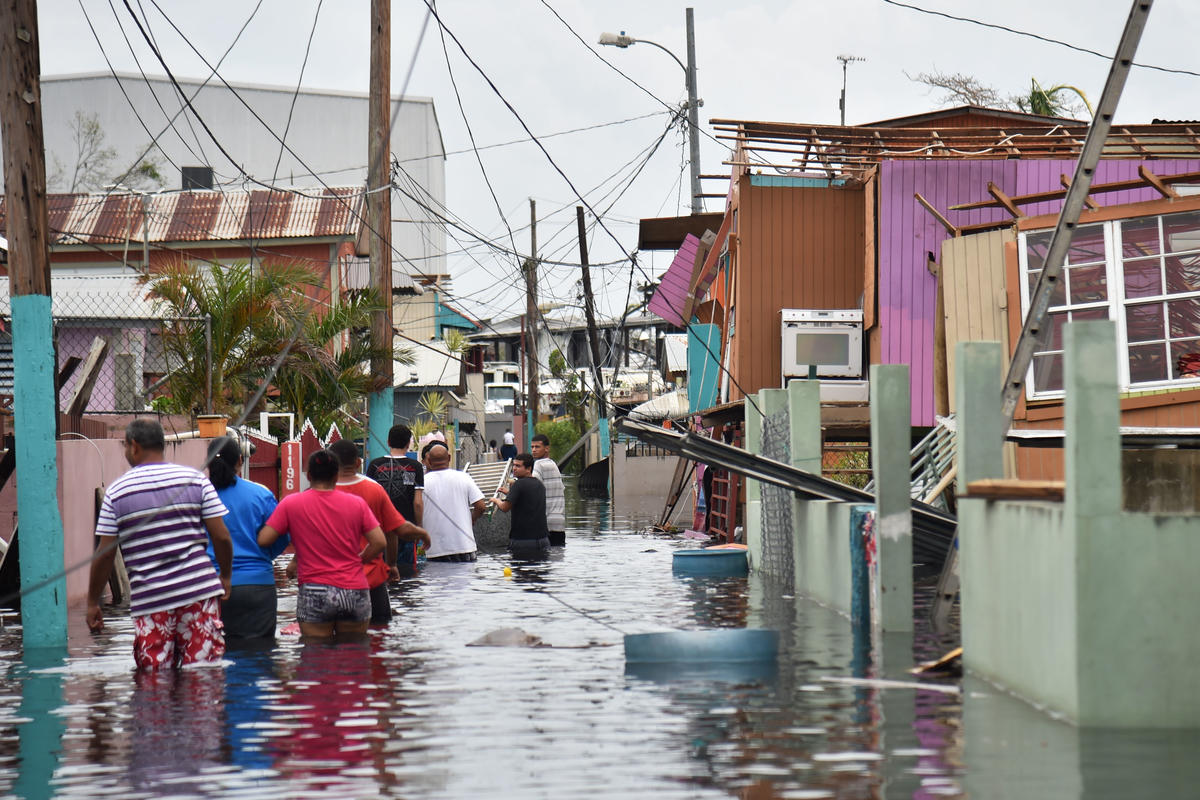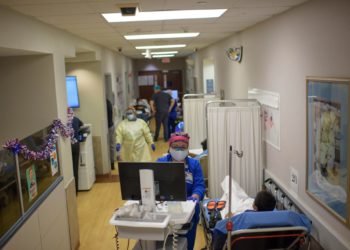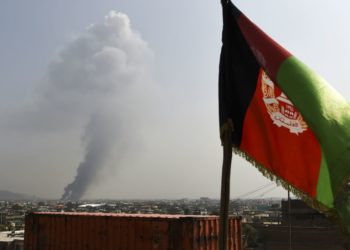According to the National Oceanic and Atmospheric Administration (NOAA), 2018 is on pace to be the fourth hottest year on record, surpassed only by 2015, 2016 and 2017. As the largest wildfire in California’s history continues to burn, scientists say there’s a clear link between climate change and more intense fires. Storms like hurricanes are also expected to grow stronger and to be more destructive as temperatures continue to rise.
As natural disasters intensify, the potential for them to inflict mass-casualties becomes greater. Mass traumas associated with disasters can have broader effects on society as a whole. In this sense, the impact of natural disasters is comparable to that of large-scale terror attacks. Although the U.S. has not suffered a terrorist attack with over 100 casualties since 9/11, the threat of another large-scale attack continues to loom.
So, how prepared is the U.S. to deal with future disasters?
The Globe Post asked Dr. Irwin Redlener, a clinical professor of Health Policy and Management and Pediatrics at Columbia University. He is the founder and director of Columbia’s National Center for Disaster Preparedness and is widely considered a leading expert on the public health ramifications of terrorism and large-scale catastrophic events.

In 2006, Redlener published “Americans at Risk: Why We Are Not Prepared for Megadisasters and What We Can Do.” He found a country that was seriously unprepared to handle a major terrorist attack or natural disaster despite unprecedented efforts to do so following 9/11 and Hurricane Katrina.
In this two-part interview, Redlener reexamines where the U.S. stands today regarding disaster preparedness, taking new factors into account such as up-to-date climate science, the threat of cyber warfare and the election of Donald Trump.
Part I
Q: In your book, “Americans at Risk,” you identified a number of significant issues that hinder the United States’ ability to prepare for a major disaster. You wrote about a system plagued by incompetence and the frank and sometimes shocking conversations you had with officials while researching this subject. Before we jump into what’s changed since then and what’s stayed the same, could you summarize some of the main findings you wrote about back in 2006?
Redlener: Let me start by saying that until the 9/11 attacks, there was not much focus on being prepared for major disasters. It was all about response. And as far as response is concerned, citizens have always volunteered to assist – from small neighborhood events to major disasters like the 1906 earthquake that destroyed San Francisco, the Great Chicago Fires and so on. But the bulk of the response has always been the responsibility of uniformed civil servants, like firefighters and police.
But focused planning to prepare for or mitigate the consequences of catastrophic events really came in to play after the attacks of 9/11. That’s when we began to invest in planning and training, establish budgets, establish priorities and professionalize planners and responders.
And it was those attacks in 2001 that led to the establishment of the Department of Homeland Security, the second largest federal department, and an unprecedented focus on disaster preparedness planning, not only nationally, but in the states and municipalities throughout the country. That said, when Americans at Risk was published in 2006, preparedness efforts and planning generally was based on experience, for what it’s worth, and anecdotes. Research and evidence-informed planning was not yet in play.
We were worried about more acts of terrorism, global pandemics, massive coastal storms like Hurricane Katrina and so on, but for all the talk and expressed concern, preparedness was disorganized, uneven and sporadic. I referred to the national picture at the time as “random acts of preparedness.”
Since I wrote that book, there have been advances. There is more research behind many aspects of national disaster preparedness. Disaster planning and disaster planners are decidedly more professional. But we are still far from what I would consider to be an optimal state of disaster readiness.
Q: You had identified nine specific points in your book where you thought the U.S. could improve on its readiness for crises. What were those points and do you believe we’ve addressed any of them sufficiently?
Redlener: The first point was a recommendation that we create a version of the 9/11 Commission, which was a deep analysis of what led to the attacks and what were the steps needed to prevent a repeat of that calamity. I thought we needed a similar commission to analyze what went right and what went wrong in major disasters like Hurricane Katrina and the flooding of New Orleans in terms of preparedness and response.
By the way, I should mention that while we are tossing around the term “prepared,” we don’t really have an effective definition of what we mean when we say “being prepared.” How do we define a prepared city, for instance? What does that mean? Prepared for what? And what level of preparedness?
Cities may be prepared to deal with coastal storms or an enormous blizzard but not a major blackout or a terrorist exploding an improvised nuclear device. We’re really not better prepared for that than we were in 2003 or 2004.
The second recommendation was that FEMA should be extracted from the Department of Homeland Security. At this point, I might not feel so strongly about that point, but back then I was concerned that FEMA would not perform its core functions so well in the massive bureaucracy of DHS.
In my opinion, the functioning of FEMA, as major disaster response agency, is extremely dependent on the quality and experience of the upper-level management. You might recall that when Hurricane Katrina devastated New Orleans and the Gulf Coast, a grossly incompetent Michael Brown was running FEMA. He was a George W. Bush appointee and his lack of experience or apparent interest in disaster response was more than apparent.
Right now, there are a couple of excellent professionals at the helm of FEMA, especially the administrator, Brock Long, a very experienced disaster manager. And fortunately, there is a terrific leader running the Department of Health and Human Services disaster response efforts, Dr. Robert Kadlec. Competence and experience at the top makes a big difference. He’s a physician with long experience in the military. He’s been in the White House and the National Security Council. He’s a true expert, and a go-getter; is the best person I could think of to be in that position
The third point was the dysfunctionality of the U.S. Surgeon General, who is supposed to be the public health czar, the nation’s top medical authority. That position has been gutted in terms of authority or responsibility ever since the legendary C. Everett Koop was the pioneering public health leader of the early 1980s. He worked his own agenda including monumental achievements like creating a major campaign to dramatically reduce tobacco consumption in the U.S. But Koop drove the White House crazy.
The fourth recommendation was the restoration of professionalism in disaster relief and there we’ve actually made a lot of progress, especially as I mentioned within FEMA, the Department of Health and Human Services and at all levels of government. However, relevant agencies are grossly underfunded and much more needs to get done, but conditions have improved since 2006.
The fifth point, still unresolved, is the role of the U.S. military in preparing for and responding to megadisaters. And this a major focus in my book.
There’s nowhere in the civilian disaster planning space where we’ve made room for the full spectrum of skills and experience that the military uniquely possess.
While I am speaking about the unfortunate exclusion of the military in large-scale disaster planning, I should also mention that we really need to do a better job of including private sector assets and expertise in disaster planning, as well. Some 80 percent of the infrastructure in the U.S. is privately owned and we rarely see them at the table.
So, when New York Governor Andrew Cuomo asked that we figure out ways to prevent another gas shortage crisis like we had after superstorm Sandy in 2012, and I was running one of his after-action report groups, my feeling was there’s things that we could do – like stockpile fuel. But we must remember that the fuel New York needs comes from oil drilled and refined by private companies, trucked and shipped by private companies and delivered to privately owned gas stations. We need that whole chain at the table to help strategize about preventing another gas shortage crisis.
Another point is that we see after every major disaster, companies like Walmart became a major part of the response by setting up distribution centers, having supplies on hand and allowing people to use their parking lots for camping out and distributing material.
If I were revising my list of nine now, I would add “point ten:” include the private sector in all levels of disaster planning!
The sixth point has to do with making major improvements to the readiness of the public health systems. This is a big problem. In 2003 we were at the peak of how much we provided from the federal government to help hospitals and health systems be prepared for natural disasters. At that point, there was approximately $500 million appropriated for hospitals to get prepared. But we have over 5,000 hospitals and related institutions so that it amounts to very small amounts, on average, for every hospital.
I was on an expert advisory panel back then and were recommending a $5 billion initial allocation to bring hospitals and health systems up to speed with respect to readiness for disasters, and then a billion dollars per year to maintain a ready state.
Unfortunately, we never got the initial bolus and we didn’t get the billion per year. What we got was $500 million annually. Insufficient.
What made matters worse was that the appropriations have now dropped to half of the original amount or about $260 million-per-year to prepare all of America’s hospitals for disasters. That’s grossly inadequate. Right now we have, as far as I’m concerned, seriously underfunded hospitals, many of which are simply not prepared to deal with a major disaster.
As far the public health systems are concerned, I’m talking about state, local and federal health departments and agencies, all of which are very involved in disaster planning and response. The 2003-2004 annual appropriation for the whole country was about $650 million. Now that’s been cut by 30 percent. So, with both the hospital preparedness funding down 50 percent and public health funding down 30 percent, we clearly have a real problem.
The seventh point was about a new millennium infrastructure project. I felt that the nation’s infrastructure needed a great deal more attention. Fragile infrastructure, like the levees in New Orleans, or those in the Sacramento River Valley, were one major storm away from failing entirely.
We’ve been aware of this problem since the beginning of the 21st century. In fact, we know that there are a couple of thousand levees and dams that need to be upgraded. When the levees were rebuilt in New Orleans after Katrina, they were upgraded by the U.S. army corps of engineers to a level that would withstand only a category three hurricane. Very unfortunate if the next big storm is a category four or five.
Investing in infrastructure makes the country much more resilient, less fragile – and it’s a robust job creator.
The eighth point is that there are many industries that are fragile in one way or another. There needs to be more thoughtful and productive regulations to make sure factories, transport systems, and storage facilities are safe and secure.
Finally, the ninth point was about how we must get citizens more actively participating in preparedness planning for themselves, their families and their communities. Making disaster preparedness a priority – without going to survivalist extremes and without obsessing about catastrophes is a major, yet still unmet, goal. Sad to say few Americans were even close to being prepared in 2006 and that has remained a problem ever since.
Irwin Redlener: U.S. Remains Ill-prepared for Terror Attacks, Natural Disasters [Part II]




















